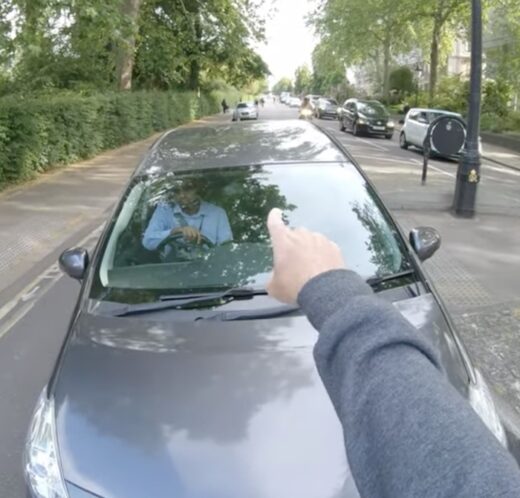How dangerous are 80mph motorways?
Recently the government has been debating the possibility of raising the speed limit on the motorway to 80mph, it seems largely on the grounds that most people who can do that speed on the motorway will do so, and according to Prof Stephen Glaister of the RAC Foundation, the motorways are Britain’s safest roads for all that. Last weekend there was a massive accident on the M5 motorway, thought to have been caused partly by a bank of smoke which came across the motorway from a nearby bonfire. In yesterday’s Guardian, Peter Wilby noted in yesterday’s Guardian that politicians are often wary of giving out “wrong signals” when it comes to the classification of drugs, for example, but are reckless about what signals they give motorists: in this case, that speeding is acceptable.
Just after a major motorway crash is probably not the best time to be discussing raising the speed limit, but having driven on motorways many a time lately (namely those from here to Maidstone — M25, M26 and M20 and, occasionally, the A2/M2 from Dartford to Chatham), I think it likely that not many vehicles in that collision were doing 80mph. There were several trucks involved, and if some of them had been overtaking others, none of them would have been doing much more than 56mph, as they have limiters fitted which prevents them going faster than that, by law. So, two of three lanes would have had traffic going less than 60mph. The other lane (trucks are banned from the outermost lane on carriageways with more than two lanes) might have included cars trying to overtake the line of trucks. What often happens is that a truck will suddenly pull out in front of a car that is coming up behind, because the truck in front slows down, causing the driver of the car to swerve into the outside lane, which might well cause cars behind to brake suddenly. Visibility can often be reduced drastically by spray and low light (or night), and on many motorways (the M26 in Kent is one example), the cats’ eyes are no longer there. Throw in a bit of smoke or fog and you have a recipe for a big pile-up like the one that happened in Somerset last Friday night. Nobody has to be doing much more than the car speed limit, which is 70mph. It is quite likely that nobody was doing 80mph or more on the M5 last Friday night.
Wilby makes the point that raising the speed limit to 80mph would bring us into line with Hungary and Slovenia, which have the highest limits and the worst road casualty rates, while the countries which have set low limits also have low casualty rates. However, this is only one part of the story: we do have a culture of adherence to road rules and of careful driving in this country, while anyone who has driven in the Mediterranean region will tell you that people there drive fast, and not just on motorways. I saw this in Greece when I was there on holiday in 1994: the taxi drivers will drive fast, even on two-lane roads which are not open roads. People in this country will speed, but will speed a little bit, particularly where they judge it to be safe or where a particular manoevre began at the speed limit leads to them not checking their speed for some time, and they will generally not cut corners.
Wilby also writes that motorists speed “not just because of a wish to cut journey times but also because speed is thrilling, particularly to men”. The problem is that speeding for a thrill can be done more effectively on two-lane roads — the sense of danger is somewhat heightened when visibility is lowered. It is also quite possible to get a “speed thrill” by doing 40mph or 50mph on a rural road where the speed limit is 60mph but the road conditions do not really permit doing anything like this safely. I have been with drivers delivering small commercial vehicles (cars and car-format vans) and I found that this behaviour is quite common, particularly when groups of (certain types of) young men are together. I would add that it is a thrill to the driver, because he is in control, and perhaps to like-minded passengers. It is not a thrill to someone (of either sex) who is not along for a death ride but simply wants to finish their job and go home. For someone like that, it is just frightening.
I am not convinced that there are compelling environmental or road-safety reasons which prohibit raising the motorway speed limit on rural, open, six-lane motorways (not stretches like the M25 in west Surrey, which is covered by a variable speed limit already, or motorways such as the M26 and M50 with two lanes in each direction, all of them open to trucks). If it is raised, however, the new limit ought to be strictly enforced, such that anyone driving faster than that, except by the smallest of margins, should receive a fine and an endorsement (or perhaps it should be accompanied by a campaign encouraging drivers to stick to 70mph, treating the extra 10mph as a buffer zone). This way, the law is brought into line with common driving practice, yet the excessive speeds some drivers travel at can be curbed and punished.

